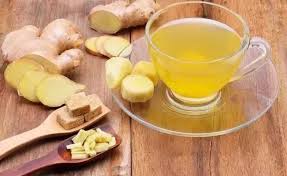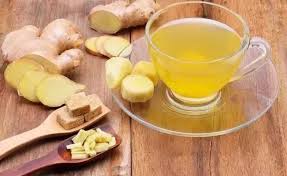Introduction
The global market for dried ginger (also known as dry ginger) and its extracts has been experiencing robust growth, driven by increasing consumer demand for natural health products, functional foods, and herbal remedies. As a key player in the international spice and nutraceutical trade, understanding the latest market trends, supply chain dynamics, and regulatory landscapes is crucial for exporters and traders.
This report provides an in-depth analysis of the dried ginger industry, covering market size, key regions, technological advancements, and emerging challenges. Whether you are a supplier, buyer, or investor, this guide will help you navigate the evolving global trade of dried ginger.
1. Global Market Overview
1.1 Market Size and Growth Projections
The global dried ginger extract market was valued at $2 billion in 2024, with a compound annual growth rate (CAGR) of 7.8% over the past five years. Projections indicate that the market will reach $3 billion by 2029, growing at an estimated 8.5% CAGR .
1.2 Regional Market Breakdown
Asia-Pacific (40% market share) : The largest consumer and producer, led by China and India.
Europe (30%) : Strong demand for organic and high-purity extracts, particularly in Germany and the UK.
North America (20%) : Rising interest in anti-inflammatory and digestive health supplements fuels growth.
1.3 Key Exporting Countries
India (45% of global production): The world’s largest dried ginger supplier.
China: Advanced processing capabilities make it the leading exporter of ginger extracts.
Nigeria: A growing supplier with competitive pricing.
2. Demand Drivers and Industry Trends
2.1 Rising Demand for Natural Health Products
Consumers are increasingly shifting from synthetic supplements to plant-based alternatives. Dried ginger, known for its anti-inflammatory, antioxidant, and digestive benefits , is widely used in:
Pharmaceuticals (40% market share) : Used in anti-nausea and pain relief medications.
Functional foods (10%, growing to 20%): Energy bars, probiotic drinks, and anti-inflammatory beverages.
Cosmetics: Skincare products for anti-aging and antioxidant properties.
2.2 Technological Advancements in Extraction
Innovations in extraction methods are improving efficiency and product quality:
Supercritical CO₂ extraction: Ensures high-purity 6-gingerol content (a key bioactive compound).
Enzyme-assisted extraction: Increases yield to 98% efficiency** in European markets.
Biotech enhancements: Fermentation techniques improve bioavailability.
2.3 Digitalization and E-Commerce Expansion
Cross-border e-commerce (e.g., Alibaba, Amazon) has boosted dried ginger sales, especially in North America and Europe.
Live-streaming commerce in China has helped domestic brands expand globally.
3. Supply Chain and Production Insights
3.1 Major Production Hubs
China (Yunnan Province) : The Luoping Small Yellow Ginger (a geographical indication product) dominates exports, with $93.77 million in 2024 , up 102.6% YoY
India : Leading in raw dried ginger production but faces climate-related yield fluctuations .
Nigeria : Emerging as a cost-effective alternative but struggles with **organic certification .
3.2 Challenges in Supply Stability
Climate change : Unpredictable weather affects yields in key regions.
Pesticide residue issues: Recent EU RASFF alerts flagged Chinese ginger for chlorantraniliprole (thiacloprid)超标, leading to stricter inspections.
—
4. Regulatory and Trade Considerations
4.1 Key Import Regulations
EU : Strict maximum residue levels (MRLs) for pesticides; organic certification preferred.
USA : FDA requires GMP compliance for extracts used in supplements.
China : Promotes exports via “Belt and Road” initiatives, offering tax incentives.
4.2 Trade Policies Impacting Exports
US-China tariffs : Some ginger exporters shifted to domestic sales or alternative markets like ASEAN and the Middle East .
RCEP benefits : Reduced tariffs for Southeast Asian markets , boosting Chinese and Indian exports.
—
5. Future Outlook and Strategic Recommendations
5.1 Market Opportunities
Functional food sector : Expected to grow to 20% market share by 2029
Emerging markets (Brazil, Mexico) : Rising middle-class demand for health supplements.
5.2 Strategies for Exporters
Diversify markets : Target Europe, North America, and Southeast Asia to mitigate trade risks.
Invest in organic & sustainable farming : Meet EU/US organic standards.
Leverage blockchain for traceability : Enhance consumer trust in supply chains.

Conclusion
The global dried ginger market is expanding rapidly, driven by health trends, technological innovations, and digital trade. While challenges like **climate risks and regulatory hurdles persist, exporters who adapt to sustainable practices and diversified market strategies will thrive.
For suppliers, staying updated on extraction technologies, e-commerce trends, and international regulations is key to maintaining a competitive edge in this dynamic industry.

